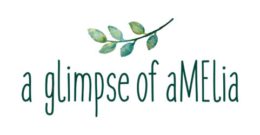Chopping Boards
Chopping boards
Whether you’re chopping, slicing or dicing a pile of vegetables or a slab of meat, you may not have put much thought into the material your cutting board is made of.
A lot of effort goes into preparing a healthy meal for your family, you don’t want your food exposed to harmful chemicals that may be in your cutting board.
AVOID:
*If your cutting board claims to be an antimicrobial, antibacterial, or low odour, it likely contains Microban or other chemicals added into the materials.
* Plastic cutting boards may contain chemicals like phthalates, DEHA and Bisphenols all of which are endocrine disruptors.
*Composite Cutting Boards (including melamine bamboo & epicurean wood fibre)
*Avoid cutting boards made of wood or bamboo pieces that are glued together with binding resins.
* Cutting Boards treated with Chemical-based wood stains (like acrylic and urethane) or treated with non-food grade mineral oil, which contains glyphosate and atrazine.
*Avoid any joins and it’s likely a toxic glue is used to hold it all together.
LOOK FOR:
*Solid wood– hardwood cutting boards made from a solid block of wood that does not use glue or resins to attach any pieces together. Wood has antibacterial properties. Maple, Oak, Rimu, walnut, cherry, beech, teak wood or kiln dried Camphor Laurel. No softwoods like pine.
BRANDS AND STYLES I CAN RECOMMEND:
@Australiancuttingboards
@fabslabscuttingboards
@Ecofoodboards
@byronbaychoppingboard
@wildwaresco
Glass
@pyrexaus
@avanti_homewares (tempered glass)
Marble
@harrisscarfe Typhoon Marble
@kitchenwarehouse Integra Marble
@myer Heritage Marble
#nontoxicchoppingboards #choppingboards #nontoxic #timberchoppingboards #foodprep #nontoxicfoodprep #sustainable #timber #nontoxictimber

